Springfield Armory 1911 .45 ACP Loaded Operator Pistol, OD Green u2013 Px9105MLP For Sale
$999.99
The Springfield Armory 1911 .45 ACP Loaded Operator Pistol in OD Green is a revolutionary firearm that has set the benchmark for tactical handguns by being the first to integrate a light-mounting rail directly into the frame. Its Standard Picatinny mounting platform allows easy fitting of various white light and laser devices, making it highly suitable for military spec-ops and law enforcement tactical teams. Known for its reliability and extreme-duty performance, the Springfield Armory Loaded Operator exemplifies top-tier 1911 design, offering a blend of innovation, durability, and adaptability, making it a preferred choice for professionals and enthusiasts.
What 1911 did Chris Kyle use?
Chris Kyle, the famous American sniper, used a Springfield Armory TRP (Tactical Response Pistol) Operator 1911 during his service.
Is it safe to carry a loaded 1911?
When considering carrying a loaded 1911 pistol, it’s essential to prioritize safety and adhere to best practices for handling firearms. The 1911 is designed with several safety features, but whether it’s safe to carry loaded depends on how you carry it and your level of training and comfort with the firearm. Here are some considerations:
1. **Condition 1 (“Cocked and Locked”)**: This is a common carry method for a loaded 1911, where the chamber is loaded, the hammer is cocked, and the manual thumb safety is engaged. This is generally considered safe for those who are well-trained and comfortable with this style of firearm.
2. **Training and Familiarity**: It’s crucial to be properly trained in handling and operating a 1911. Understanding its safety mechanisms and becoming proficient in their use is fundamental to safely carrying the firearm.
3. **Holster Choice**: Use a quality holster that covers the trigger guard and allows you to carry the firearm with the safety engaged securely. Proper holstering prevents accidental discharge.
4. **Regular Maintenance**: Regularly maintain and inspect your 1911 to ensure it is in good working condition, as a malfunctioning firearm can be dangerous.
5. **Local Laws and Regulations**: Be aware of and comply with any local laws and regulations regarding carrying a loaded firearm.
6. **Comfort and Confidence**: Ultimately, you need to feel confident and comfortable with your chosen method of carry. If you have any doubts, seek additional training or consider a different style of firearm.
If you’re ever in doubt, consulting with a firearms instructor or expert can provide you with guidance tailored to your specific needs and skill level.
Is Springfield Operator good?
To evaluate whether Springfield Operator is good, we would need more specific context about what “Springfield Operator” refers to. Are you discussing a business, a telecommunications service, an energy company, or something else entirely? Additionally, “good” could refer to a variety of factors such as customer satisfaction, service quality, reliability, company ethics, or business performance. Please provide more details for a more targeted response.
What is the most common problem with the 1911?
The most common problem with the 1911 pistol is often related to feeding and reliability issues. These can include failures to feed, failures to eject, or jams. Such issues are usually caused by magazine problems, improper maintenance, incorrect spring tension, or issues stemming from ammunition types and mismatched components. Regular maintenance, using quality magazines, and ensuring compatibility between parts can often mitigate these problems.
What 1911 does the FBI use?
The FBI uses a customized version of the 1911 pistol. Specifically, they have been known to use the Springfield Armory Professional Model 1911, which is part of their Hostage Rescue Team’s standard issue for specialized units. This model is built to meet the specific requirements of the FBI, including accuracy, reliability, and performance standards for tactical operations.
What caliber did Chris Kyle use on his longest shot?
Chris Kyle used a .338 Lapua Magnum caliber round for his longest confirmed sniper shot.
Can a 1911 go off if dropped?
Yes, a 1911 can potentially go off if dropped, especially older models without additional safety mechanisms. However, modern 1911 pistols often include features like a firing pin block or a drop safety to prevent accidental discharge from being dropped. Users should always handle firearms safely to prevent any accidents.
Is a 1911 too big to CCW?
Whether a 1911 is too big for concealed carry (CCW) largely depends on personal preference, body type, clothing style, and experience with carrying firearms.
The 1911 is known for its solid construction and historical significance, but it is typically heavier and larger than many modern compact or subcompact pistols designed specifically for concealed carry. Here are some factors to consider:
1. **Size and Weight:** The standard full-size 1911 is generally larger and heavier than many people prefer for concealed carry. However, there are compact and lightweight versions of the 1911 available.
2. **Body Type and Clothing:** Individuals with larger body frames or who wear loose-fitting clothing may find it easier to conceal a 1911. People with smaller frames might find it challenging to conceal such a sizable firearm without printing.
3. **Holster and Position:** The type of holster and the position of carry (e.g., inside-the-waistband, shoulder holsters) play significant roles in how comfortable and concealable the firearm is.
4. **Comfort and Confidence:** Some people are more comfortable and confident carrying a firearm they are familiar with, even if it is on the larger side.
Ultimately, the decision comes down to personal preference and what you find comfortable and effective for your needs. It might be worthwhile to try carrying a 1911 (if you have the opportunity) to determine if it suits your body type and lifestyle.
What not to do with a 1911?
When handling a 1911 pistol, there are several things you should avoid to ensure safety and maintain the firearm’s condition:
1. **Don’t Skip Safety Checks**: Always treat the gun as if it is loaded. Never skip performing a basic safety check to verify whether the firearm is loaded or not.
2. **Avoid Disassembly Without Proper Knowledge**: Do not attempt to disassemble or modify the 1911 without the proper knowledge or a gunsmith’s guidance, as incorrect handling can lead to malfunction or damage.
3. **Don’t Use Incorrect Ammunition**: Never use ammunition incompatible with the specifications of your 1911. Using the wrong caliber can be dangerous.
4. **Avoid Excessive Dry Firing**: While occasional dry firing is generally acceptable, excessive dry firing without snap caps can damage the firing pin or other components.
5. **Do Not Over Lubricate or Neglect Cleaning**: Over-lubrication can attract debris and cause malfunctions, while a lack of cleaning can lead to residue buildup affecting operation.
6. **Avoid Unsafe Handling**: Do not point the gun at anything you do not intend to shoot, and keep your finger off the trigger until ready to fire.
7. **Don’t Store Improperly**: Do not store your 1911 in a place where it is exposed to moisture without proper protection, as this can lead to rust.
8. **Avoid Neglecting Training**: Don’t assume you will be proficient without practice. Regular training and maintenance of skills are essential.
By avoiding these actions, you can ensure the safe handling and longevity of your 1911 pistol.
Is Springfield Armory out of business?
No, Springfield Armory is not out of business. It is still operational and continues to manufacture firearms.
Who makes guns for Springfield Armory?
Springfield Armory, Inc., an American firearms manufacturer, produces its own line of firearms. Originally established in the 1970s, it is unrelated to the historical Springfield Armory that was a government arsenal. Springfield Armory, Inc. designs and manufactures a variety of firearms, including handguns and rifles, and is known for models like the XD series of pistols and the M1A rifle.
What does TRP stand for in Springfield Armory?
In the context of Springfield Armory, TRP stands for Tactical Response Pistol.
Are 1911s known for jamming?
1911 pistols have a reputation for being reliable, but like any firearm, they can experience jamming issues. These problems may arise due to factors such as improper maintenance, use of low-quality or incorrect ammunition, or issues with specific parts such as magazines or extractor tension. Modern iterations and high-quality models of the 1911 are generally designed to minimize these issues, but proper care and maintenance are essential to ensure reliable operation.
What are the disadvantages of the 1911?
The 1911 pistol, while highly regarded and historically significant, does have some disadvantages:
1. **Weight and Size:** The 1911 is relatively large and heavy compared to more modern handguns, which can make it less comfortable to carry for extended periods.
2. **Capacity:** Typically, the standard 1911 design has a single-stack magazine that holds 7 to 8 rounds. This is less than the capacity of many modern double-stack designs, which can limit its effectiveness in situations requiring higher ammunition capacity.
3. **Recoil Management:** The .45 ACP cartridge, common in many 1911s, generates significant recoil, which might be challenging for some shooters to manage, especially in rapid-fire scenarios.
4. **Maintenance Sensitivity:** The 1911 requires regular maintenance and is more sensitive to environmental conditions compared to some modern handguns. Dust, dirt, and lack of lubrication can lead to malfunctions.
5. **Complexity and Tuning:** The 1911 has more complex mechanics compared to simpler, striker-fired pistols. Optimal performance often requires fine-tuning by a knowledgeable gunsmith, especially for custom or non-standard builds.
6. **Price:** High-quality 1911s can be expensive, both in terms of initial purchase and potential custom modifications or enhancements.
7. **Ergonomics:** The ergonomics of the original 1911 design may not suit all shooters, particularly those with smaller hands, due to its grip size and straight angle.
8. **Sights and Features:** Older or basic models often come with fixed, low-profile sights and lack modern features such as accessory rails, making them less adaptable to contemporary tactical applications.
While these disadvantages exist, many enthusiasts and professionals value the 1911 for its accuracy, trigger quality, and historical appeal.
Why was the 1911 phased out?
The M1911 pistol was phased out as the standard-issue sidearm for the United States Armed Forces primarily due to advancements in firearm technology and changes in military requirements. The main reasons include:
1. **Caliber and Capacity**: The M1911 is chambered in .45 ACP, which, while powerful, has a lower magazine capacity compared to the 9mm cartridges that became the NATO standard. Sidearms with higher magazine capacities and smaller calibers like the Beretta M9, which replaced the M1911, provided soldiers with more rounds before needing to reload.
2. **Ergonomics and Design**: Newer models offered improved ergonomics, making them easier and more comfortable to handle for a wider range of soldiers.
3. **Weight and Size**: Modern pistols tend to be more compact and lighter, which is beneficial in various operational environments where ease of carry is important.
4. **Technological Advancements**: Advances in pistol technology and materials resulted in more reliable, durable, and easier-to-maintain firearms, which met the evolving needs of the military.
5. **Standardization**: As part of the NATO standardization efforts, the shift to the 9mm cartridge was significant in ensuring compatibility and interoperability among allied forces.
Overall, while the M1911 is a historically significant and well-regarded firearm, these factors contributed to its phasing out in favor of more modern alternatives.
| Frame Material | Forged Steel with Integral Accessory Rail, Olive Drab Armory Kote |
|---|---|
| Slide | Forged Steel, Black Armory Kote |
| Sights | Fixed Low Profile Combat Rear, Dovetail Front, Tritium 3 – Dot |
| Trigger | Long Aluminum Match Grade, 5 – 6 lbs |
| Grips | Pachmayr Wraparound |
Be the first to review “Springfield Armory 1911 .45 ACP Loaded Operator Pistol, OD Green u2013 Px9105MLP” Cancel reply
Related products
Springfield Armory 1911 Loaded Operator
Springfield Armory 1911 .45 ACP Loaded Operator Pistol, OD Green
Springfield Armory 1911 Loaded Operator
Springfield Armory 1911 Loaded Operator 5" 7rd .45acp Pistol – PX9109LCA
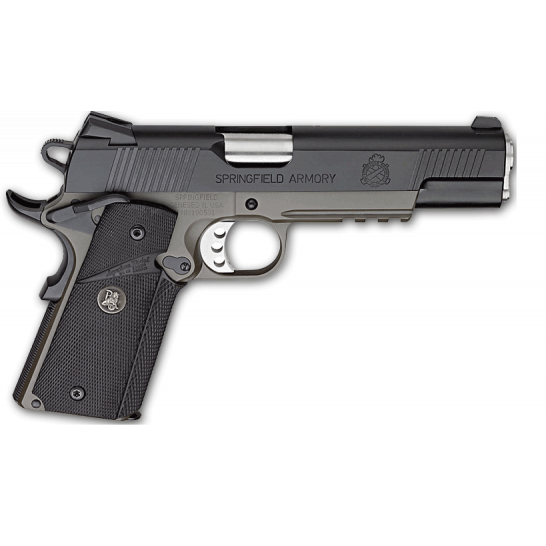
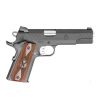
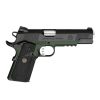
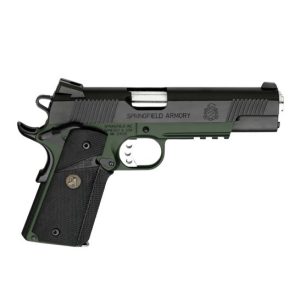
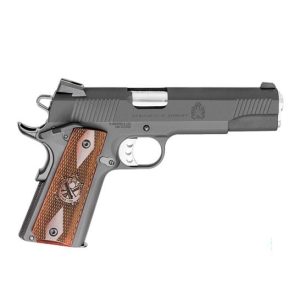
Reviews
There are no reviews yet.